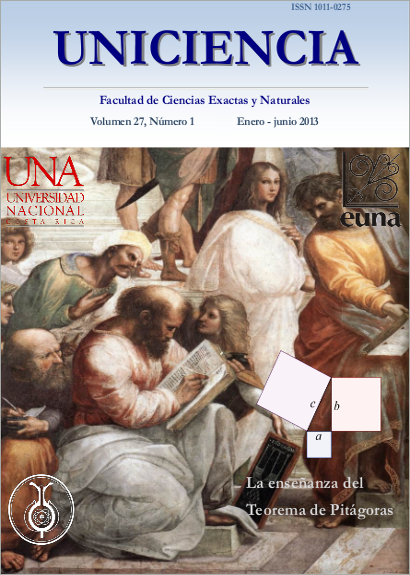Agriculture pesticides use as tool for monitoring health hazards
Keywords:
crops, pesticides, quantity, toxicity, indicators, hazards, healthAbstract
In Costa Rica the use of toxic pesticides has increased. This is mainly due to the development of resistant pests, and the need for certain agricultural export products to maintain its position in the international marketplace. Humans when in contact with pesticides can experience adverse health effects, ranging from acute to chronic and that manifest in different degrees. To generate indicators of the hazards arising in the human health posed by the use of these substances in some crops, the amount of pesticides applied and their toxicity was used. Data of pesticide use were collected directly from producers, through a questionnaire. The active ingredients identified were characterized in accordance with their toxicity and classified according to the manifestation of the effects. The indicators used were the amount of pesticides applied (kg ai / ha / year) for the most considered toxic class: 1-effects for acute toxicity on high-grade and, 2- the pesticides with three or more positive chronic effects. It is recommended to monitor the use of methyl bromide, metam sodium, terbufos, ethoprophos, endosulfan, MCPA and carbofuran for high to extreme acute toxicity, and the one of mancozeb, paraquat, diazinon, 2,4-D and carbofuran for chronic effects.Downloads
Published
Issue
Section
License
Authors who publish with this journal agree to the following terms:
1. Authors guarantee the journal the right to be the first publication of the work as licensed under a Creative Commons Attribution License that allows others to share the work with an acknowledgment of the work's authorship and initial publication in this journal.
2. Authors can set separate additional agreements for non-exclusive distribution of the version of the work published in the journal (eg, place it in an institutional repository or publish it in a book), with an acknowledgment of its initial publication in this journal.
3. The authors have declared to hold all permissions to use the resources they provided in the paper (images, tables, among others) and assume full responsibility for damages to third parties.
4. The opinions expressed in the paper are the exclusive responsibility of the authors and do not necessarily represent the opinion of the editors or the Universidad Nacional.
Uniciencia Journal and all its productions are under Creative Commons Atribución-NoComercial-SinDerivadas 4.0 Unported.
There is neither fee for access nor Article Processing Charge (APC)






